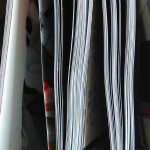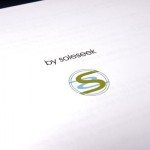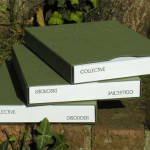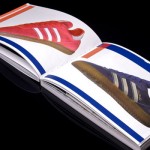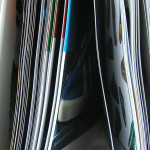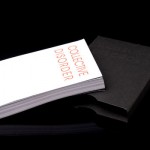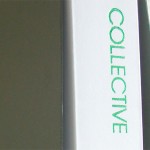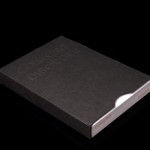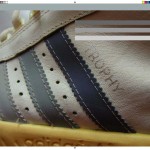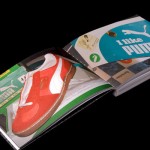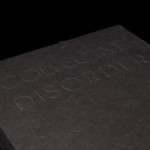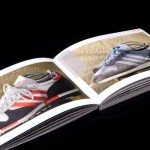COLLECTIVE DISORDER: BLACK ONION PUBLISHING 2008
FROM: EAT MORE SHOES
Most underground or specialist scenes are nothing without their fan-base. Football, music, fashion, wherever you look you’ll see a mass of folk, banded together, united under one flag, or belief, or passion. It’s these people who become the experts, the legends, the gurus of such sub-cultures across the globe. John Brolly, and his entry into the sneaker publication world which was known to have “joined the ranks of sneaker bibles”, is a perfect example of one such figure.
To celebrate the ten year anniversary of massive sneaker store Size?, the crew from soleseek dropped a limited edition reprint of their slammin’ hit sneaker book, ‘Collective Disorder’. Originally released in 2008, the finely crafted archive of vintage trainers wasn’t the only project pushed forward by John Brolly, who ambitiously launched a dedicated online photo gallery (entitled ‘soleseek’) showing off pairs from yesteryear. Self-proclaimed as the ‘purveyors of vintage and deadstock’ it was obvious from the get-go that these cats had sparks in their eyes and a bounce in their step – and not necessarily because they were wearing some legendary footwear.
As always eatmoreshoes is hungry to meet, greet, and dissect these sneaker freaks within the comforts of our own, London-based fort. And as luck would have John Brolly has agreed to such a session, poppin’ by for a chat on the subjects of his start in the sneaker scene, his progression with various projects – including Collective Disorder – and what we can expect from him in the future.
Welcome John! Would you describe yourself as a collector?
I’d say I’m a collector and an obsessive hoarder who has moments of clarity to question “why?”, but I never find the answers.
We’re certainly off to an honest start! How would you describe your collection?
It’s much more reserved and calculated now. I only really buy vintage or deadstock PUMA from the early 70s through to the late 80s. But previously I was also obsessed with 70s and 80s adidas runners. In fact, more than just runners, including tennis, indoor, leisure, and hiking styles from PUMA, adi, and other major brands.
You’re a true OG hunter then, only after the age-old artifacts. So, why PUMA and adidas?
Well, I got to be honest and say it’s all down to my teenage years. The only brands that we were interested in were adidas and PUMA. It must be a certain reminiscent factor, happy times, and in all honesty the design and builds were far superior than now. I’m not doing “oh I remember back in the day when everything was better”, it’s just a fact that the raw materials were superior when production was done in Europe.
Right, no doubt. Besides that, is there anything else special about the 70s and 80s releases?
In terms of the period I think it’s the ‘less is more’ approach. The ultimate design principle of form following function. I mean trainers with wings, what’s that all about? You have a sole, midsole, and upper with branding being either three stripes or a formstripe. And as technology improved for running shoes, yeah, add additional heel supports, midsole welts, breathable nylons and mesh, even combine materials for comfort and function, sure thing, but don’t put a chunk of plastic on a toe piece that has no functionality at all. Sorry, rant over.
No worries John, we completely understand such rants. You must enjoy the hunt though, eh?
It’s now a fixation with runners, as I think that PUMA did so many models and the archive material is sadly lacking, it really has the feel that pure gold is always ’round the corner. There are still models popping up that I’ve never seen before or heard of and that is part of the buzz. To have something unique and rare as well as being fully wearable almost thirty years after production adds to the buzz.
And to fund your hunger for the buzz, what do you do for quid?
I have my own consultancy and I’m currently working for an online start up in London. I also own ‘Made in These Isles’, an online retail space for showcasing products made within the British Isles. It’s been a long hard slog from the History of Art and Design in Manchester in the early 1990s.
Yes, it’s quite the eclectic shop, actually, offering a variety of original items from vintage leather to new knitwear, even skateboards and furniture. What about Soleseek, another project of yours?
I started Soleseek in 2005 with Bennet Martin. We had an off-chance meeting whilst both wearing the first round of adidas München re-issues. We chatted about the reasons we had the München on and from that chat Soleseek as a concept was born. Initially we just wanted to sell loads of vintage and deadstock trainers so we could cherry pick the best models that came through our hands. Since then I’ve been trying to build a unique trainer archive to place online as I still think there is a need. I’ve often thought about a shop again but not sure if I have the time or the stock exists anymore.
So this was before you began working on your book, correct?
Right. ‘Collective Disorder’ came later. It just made sense to us as we had so many amazing vintage pairs going through our hands we thought “we’ve got to capture some part of this”. And as we built up good relationships with a number of serious collectors and buyers we thought we should try it.
How would you describe the challenges you had along the way?
Well, one of the biggest challenges was picking the contributors and getting their imagery. We didn’t have the capital or funds to travel the globe to shoot the shoes so we got the guys to take their own shots and then we collated, selected, retouched, and designed the book. It took a long time. The selection process was tough.
And once Size? picked it up and helped to distribute, how’d this effect your work with trainers?
To be fair, at the time, we thought it was a good avenue for both parties. Size? sold out pretty sharpish in a couple of days I think. It helped us to reclaim our initial investment on the first run. But that’s about as far as it went, however since then we have done some work with PUMA.
Can you be more specific?
All I can really say about my PUMA work is that there were a couple of projects with a release last year and with something else being release before the end of the year. Cagey me… shh! I’m not supposed to say.
Fair enough, loose lips sink ships, and all of that. We wouldn’t wanna get you into any trouble now! Back to the book, how would you describe its final form for those trainer fans out there who haven’t seen it first hand?
We wanted to make it pictorial, almost a snapshot of the time with products from another time. A capsule. We didn’t feel the need to write about the trainers and add opinions that really only had an impact on how we saw things. However two small contributions came from Kerso and Phil Thornton. The book itself was a nice bit of ephemera – foil blocked covers with its own embossed slip case limited to one hundred copies.
As for those contributors – C-LAW, Quote, Kerso, 10ARI, Jude, Shoeclassics, and deluded monkey – what can you tell us about these people?
We got to know these guys by trading and selling shoes. We were lucky back then and had a couple of really good hauls at a time that most shops were already cleaned out. Maybe it was our none-biased approach to the brands and some very sensible, or not in hindsight, pricing. These contributors we felt had the collections that we most wanted to showcase. So we did, and although it was global, it did have a very British bias to the styles and models. But that’s where we’re from, so why not?
Definitely, you gotta speak your piece in one way or another. Ultimately, what did you want this book to mean?
It was only meant to be a visual pleasure, examples that may well have not been seen before. Showing examples from other hunter gatherers. Personally, I’m very proud of it and the fact it doesn’t have opinions makes it more the worthwhile. Why speak when you can let the models do the talking, not the walking? Having said that, we could have done a couple of books with the amount of models we recorded.
Speaking of which: what’s next for you? Any other books in the works?
Maybe ‘Selective Missed Orders – the ones that got away’! It would be a nice idea to do a second version but there’s no way I have the time at the moment. I have had a couple of chats with other collectors, writers, and publishers to maybe do a periodical but I don’t think I can commit to deliver something worthwhile and not sure there is a marketplace for such a product. But who knows.
We’ll certainly be keeping our ears to the tracks, hopin’ for a Brolly train to come blasting’ down the line. Lastly, can you give us any previews or hints as to what we can expect out of soleseek’s soon-to-come, interactive archive?
I’d just really like to do it properly. There’s been two soleseek archives to date, and although there was a fair bit of content, they lacked a number of features for them to have an impact. So maybe I’ll get ’round to scanning my collection of catalogues and get some of the models up there that people may well have not seen before.
I know we’d certainly appreciate it John. Kudos for what you’ve accomplished through your adi and PUMA passion over the years, and here’s to many more buzzes to come!
written by Dylan Cromwell
photography by errol

